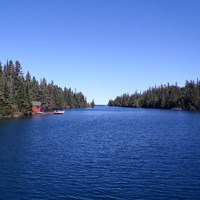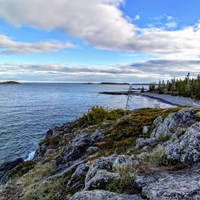A Superior Connection
Lake Superior is the largest freshwater lake in the world. It is the largest, coldest, and most pristine of the five great lakes. Not only is it vast and deep, Lake Superior is also powerful. It creates its own weather and climate, resulting in cooler temperatures in the summer and milder temperatures in the winter. Waves continually sculpt shores and beaches. Storms, snow, fog, humidity, temperatures and wind generated from the lake impact every nearby ecosystem.Spanning across Michigan’s Upper Peninsula to Wisconsin and Minnesota, Lake Superior is home to five U.S. National Park Units: Pictured Rocks National Seashore (MI), Isle Royale National Park (MI), Keweenaw National Historical Park (MI), Apostle Islands National Seashore (WI), and Grand Portage National Monument (MN). While each of these parks is distinct in its character and history, they are all notably connected by “the Big Lake.”
Each of the five Lake Superior National Parks are connected through a common ecosystem, but even more so by the broader cultural and geological history of the Lake Superior region. Tour the area and let Lake Superior tell its story through the lens of a shared history in Anishinaabe culture, logging, mining, fishing, and maritime industries, and geology.













